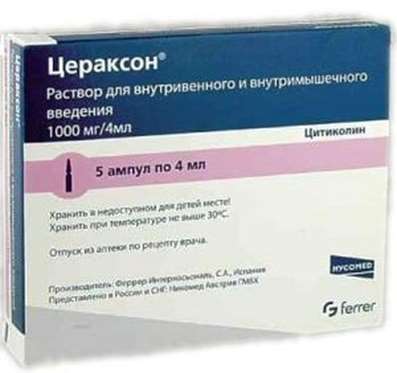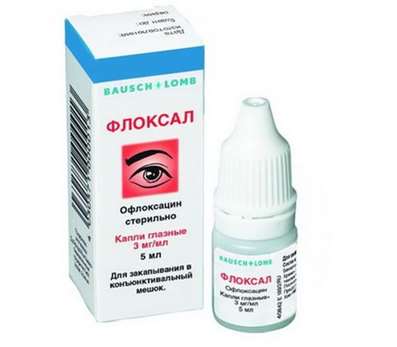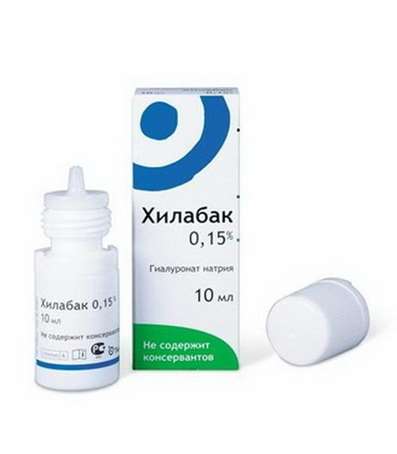Instruction for use: Sotalol (Sotalolum)
I want this, give me price
chemical name N- [4- [1-Hydroxy-2 - [(1-methylethyl) amino] ethyl] phenyl] methanesulfonamide (as hydrochloride)
Pharmacotherapeutic group:
Beta-blockers
antiarrhythmic agents
The nosological classification (ICD-10)
I10 Essential (primary) hypertension
Hypertension, Arterial hypertension, Arterial hypertension crisis course, Essential Hypertension
Primary hypertension, Arterial hypertension, complications of diabetes, hypertension, The sudden increase in blood pressure, Hypertensive disorders of blood circulation, hypertensive condition, hypertensive crises, hypertension, arterial Hypertension, malignant Hypertension, Hypertonic disease, Hypertensive crisis, Hypertension, accelerated hypertension, malignant hypertension, The aggravation of hypertensive disease, Transient hypertension, Isolated systolic hypertension
I15 Secondary hypertension
Arterial hypertension, complications of diabetes, hypertension, The sudden rise in blood pressure, Hypertensive disorders of blood circulation, hypertensive condition, hypertensive crises, hypertension, arterial hypertension, malignant hypertension, Hypertensive crisis, Hypertension, accelerated hypertension, malignant hypertension, hypertensive crisis, The aggravation of hypertensive disease, Transient hypertension, hypertension, Arterial hypertension, Arterial hypertension crisis course, renovascular hypertension, symptomatic hypertension, renal hypertension, Renovascular hypertension, Symptomatic hypertension
I20 Angina [angina]
Heberden disease; Angina pectoris; The attack of angina pectoris; recurrent angina; Spontaneous angina; Stable angina pectoris; Angina rest; Angina progressing; Angina mixed; Angina spontaneous; stable angina; Chronic stable angina; Angina Syndrome X
I21 Acute myocardial infarction
Myocardial infarction in the acute phase, Acute Myocardial Infarction, Myocardial infarction with pathologic Q wave and without, Myocardial infarction complicated by cardiogenic shock, Infarction left ventricular, Transmural myocardial infarction, Myocardial infarction netransmuralny (subendocardial), Netransmuralny myocardial infarction, Subendocardial myocardial infarction, The acute phase of myocardial infarction, Acute myocardial infarction, Sub-acute phase of myocardial infarction, Subacute phase of myocardial infarction, Thrombosis of the coronary arteries (the arteries), Threatened myocardial infarction, Myocardial infarction without Q wave
I22 Subsequent myocardial infarction
Atherosclerosis and the likelihood of reinfarction, Myocardial infarction re, Relapses myocardial infarction
I42 Cardiomyopathy
Cardiopathy, diffuse cardiomyopathy, Diffuse neobliteriruyuschaya cardiomyopathy, myocardial Gipokaliygistidii, myocardiodystrophy, Acute cardiomyopathy, Chronic cardiomyopathy
I47.1 Supraventricular tachycardia
Supraventricular paroxysmal tachycardia; supraventricular tachyarrhythmia; supraventricular tachycardia; Supraventricular arrhythmias; Supraventricular paroxysmal tachycardia; supraventricular tachyarrhythmias; supraventricular tachycardia; Neurogenic sinus tachycardia; orthodromic tachycardia; Paroxysmal supraventricular tachycardia; Paroxysm of supraventricular tachycardia; Paroxysm of supraventricular tachycardia with WPW-syndrome; Paroxysm of atrial tachycardia; Paroxysmal supraventricular tachyarrhythmia; Paroxysmal supraventricular tachycardia; Politopnye atrial tachycardia; Atrial fibrillation; Atrial tachycardia is true; Atrial tachycardia; Atrial tachycardia with AV block; reperfusion arrhythmias; Reflex Bertsolda-Jarisch; Recurrent sustained supraventricular paroxysmal tachycardia; Symptomatic ventricular tachycardia; Sinus tachycardia; Supraventricular paroxysmal tachycardia; supraventricular tachyarrhythmia; supraventricular tachycardia; supraventricular arrhythmia; supraventricular arrhythmias; Tachycardia of AV connections; supraventricular tachycardia; Tachycardia orthodromic; sinus tachycardia; The nodal tachycardia; Chaotic atrial tachycardia politopnye; Wolff-Parkinson-White
I47.2 Ventricular tachycardia
Torsades de pointes (torsade de pointes), Symptomatic ventricular tachycardia, Torsades de pointes in myocardial infarction, Ventricular fibrillation, Ventricular tachycardia , Ventricular tachyarrhythmias, Life-threatening ventricular arrhythmias, Sustained ventricular tachycardia, Sustained monomorphic ventricular tachycardia, Paroxysmal ventricular tachycardia torsades, Paroxysmal ventricular tachycardia
I49.0 Ventricular fibrillation and flutter
ventricular fibrillation, Recurrent ventricular arrhythmias, ventricular flutter, Life-threatening ventricular fibrillation, ventricular fibrillation
I49.1 Atrial premature depolarization
supraventricular arrhythmia, supraventricular arrhythmias, supraventricular beats, atrial premature beats
I49.3 Premature ventricular depolarization
Asynergia left ventricle, ventricular Arrhythmia, Pronounced PVCs, Ventricular fibrillation, ventricular beat, Ventricular arrhythmias, Paroxysmal ventricular arrhythmia, Recurrent ventricular arrhythmias, ventricular premature beats, Asynergia ventricular
CodeCAS 3930-20-9
Characteristic
white crystalline substance soluble in water, propylene glycol and ethanol, slightly soluble in chloroform. The molecular weight of 308.8
Pharmacological Properties of SotalolPharmachologic effect
antianginal, hypotensive, anti-arrhythmic.
Non-selective beta-adrenoceptor blocking and potassium channels (high dose), no membrane stabilizing and intrinsic sympathomimetic activity. Beta-adrenoceptor blocking effect is seen after a single dose of 25 mg, becomes clinically significant at a dose of 160 mg / day and the maximum - when taking more than 320 mg / day. It increases the repolarization of the atria and ventricles (slow potassium current) and the length of the building with a simultaneous lengthening of the effective and absolute refractory periods (III class of anti-arrhythmic drugs). It reduces heart rate, myocardial contractility (negative inotropic effect), and Sad Dad slows AV conduction, reduces plasma renin activity.
Antiarrhythmic action begins at 1 h after ingestion, reaches a maximum 2.5-4 hours and lasts 24 hours. The on / in a dose of 40 mg of effect occurs within 5 minutes and lasts for 90-120 minutes. Effective for arrhythmias with the mechanism of re-entry, especially in atrial fibrillation. With increasing doses appears proaritmogennoe action, increases the risk of arrhythmias, including lethal.
In experimental studies had no carcinogenic effects at 24-month rats doses 137-275 mg / kg / day (approximately 30 times the MRDCH) and mice with doses of 4141-7122 mg / kg / day (450-750 MDRCH) for 24 months . In male and female rats using doses up to 1000 mg / kg / day (100 MRDCH) has no adverse effect on fertility. When administered to rabbits at a dose of 160 mg / kg / day (16 MRDC) noted a slight increase in mortality fruit.
Quickly and completely absorbed from the gastrointestinal tract. Bioavailability - 89-100%, food intake, particularly dairy products, reduce it to 18-20%. Cmax achieved within 2-4 hours, the equilibrium concentration is created after 5-6 receptions (for 2-3 days). It binds to plasma proteins. Poor passes through GEB (vysokogidrofilen) - levels in the cerebrospinal fluid is only 5-28% of the plasma. It penetrates through the placental barrier and into breast milk. Practically not metabolized in the liver (less than 1%). T1 / 2 7-18 hours (mean 15 hours) in renal failure -. To 48 hours in elderly patients is able to cumulate. Report mostly kidneys (80-90%), mainly due to glomerular filtration.
Indications for Sotalol
Ventricular arrhythmias: fibrillation, refractory shapes, tachycardia (paroxysmal and persistent forms during programmed electrical stimulation of the heart); AV reciprocating tachycardia with abnormalities of cardiac conduction system (WPW syndrome, AV the dissociation unit); supraventricular arrhythmias (including prevention); tachycardia, thyrotoxicosis; angina, especially when combined with tachyarrhythmias; arterial hypertension; hypertrophic cardiomyopathy, mitral valve prolapse, prevention and treatment of myocardial infarction (during stable condition patient).
ContraindicationsforSotalol
Hypersensitivity, heart failure stage IV according to NYHA, AV blockade II-III degree sinoatrial block syndrome sick sinus, cardiogenic shock, severe hypotension, prolongation of the interval QT, sinus bradycardia (less than 50 u. / Min) expressed by peripheral circulatory disorders , laryngeal edema, severe allergic rhinitis.
Restrictions apply
Bronchial obstruction (chronic bronchitis, emphysema), psoriasis, diabetes, hypoglycemia, pheochromocytoma, renal failure, metabolic acidosis, hypokalemia, hypomagnesemia, older age, history of myocardial infarction, allergic history, old age, pregnancy, breastfeeding.
Pregnancy and breast-feeding
Perhaps if the expected effect of therapy outweighs the potential risk to the fetus.
Category effects on the fetus by FDA - B.
At the time of treatment should stop breastfeeding.
Side effects of sotalol
Allergic reactions: photosensitivity, erythematous rash (2%), angioedema, anaphylaxis.
From the nervous system and sensory organs: dizziness (7%), headache (4%), asthenia (4%), irritability (2%), depression (1%), insomnia (1%), paresthesia (1% ), a decrease of (1%), keratoconjunctivitis (1%), a decrease in lacrimation (1%), fatigue, confusion, emotional lability, violation of sensitivity and coordination, peripheral neuropathy.
Cardio-vascular system and blood (blood, hemostasis): bradycardia (8%), palpitations (3%), hypotension (3%), heart failure (2%), syncope (1%), violation of the peripheral circulation ( 1%), lengthening the interval QT, proarrhythmic effects (including type "pirouette" arrhythmia) - less than 1%, hypertension (less than 1%), the AV blockade, collapse, leukopenia, eosinophilia.
From the respiratory system: dyspnea (5%), chest pain (4%), pulmonary edema, bronchospasm.
From the digestive tract: nausea and vomiting (5%), dyspepsia (2%), diarrhea (2%), appetite disorders (1%), change in body weight (1%), abdominal pain (less than 1%), dry mouth, anorexia.
From the musculoskeletal system: arthralgia (1%), back pain (1%), arthritis, muscle weakness, convulsions.
From the urogenital system: peripheral edema (2%), impotence (1% of cases), violation of urogenital function (1%), decreased libido.
Other: alopecia, prurigo, elevated triglycerides, hypoglycemia, the syndrome.
Interaction
Hypotension increase tricyclic antidepressants, barbiturates, phenothiazines, narcotic analgesics, haloperidol, vasodilators, diuretics. In combination with MAO inhibitors and norepinephrine possible sharp rise in blood pressure, with tubokurarinom - deepening of neuromuscular blockade. Cardiac glycosides, reserpine, clonidine, alpha-methyldopa, guanfacine potentiate the slowing of the heart rate and deceleration of intracardiac conduction, calcium antagonists - the blockade of beta-adrenergic receptors, amiodarone - the risk of arrhythmias; sulfonylureas - hypoglycemia; quinolones - increased bioavailability. It weakens the effect of theophylline and the action of beta2-agonists. Increases flecainide and lidocaine in the plasma.
Overdose
Symptoms: weakness, dilated pupils, loss of consciousness, generalized myoclonic seizures, hypotension, bronchospasm, bradycardia (with asystole), atypical ventricular tachycardia, the symptoms of cardiogenic and hypovolemic shock, heart failure, hypoglycemia.
Treatment: gastric lavage, hemodialysis; symptomatic therapy: atropine, dopamine, isoprenaline, epinephrine, glucagon.
Routes of administration
Inside, in / in.
Precautions
The appointment should be canceled other antiarrhythmic drugs - treatment interruption should be at least 2-3 periods of T1 / 2 of the latter. After amiodarone, sotalol can only be used if the QT interval is normalized. The highest probability of arrhythmogenic action marked the beginning of treatment and whenever the dose is increased, so it is recommended to increase gradually, with an interval of 2-3 days. The therapy required monitoring of heart rate, blood pressure, interval QT (with its extension of more than 550 ms receiving end), respiration, periodic monitoring of peripheral blood. In patients with diabetes need to control blood sugar, against diuretics - potassium content in the plasma.
It should be borne in mind that a dose of 320 mg or more impair psychomotor reactions. It is necessary to decrease doses (until canceled) in elderly patients with obstructive airways disease or shortness of breath, hypotension, bradycardia. Cancelling should gradually reduce the dose over 1-2 weeks (due to the risk of arrhythmias). When pregnancy sotalol are canceled for 2-3 days prior to delivery, in exceptional cases, infants within 48-72 hours after birth should be under medical supervision.
In patients with pheochromocytoma assignment is only possible with alpha-blockers. Against the background of aggravated allergic history may increase the severity of hypersensitivity reactions and the lack of therapeutic effect of conventional doses of epinephrine.
During the surgery the drug of choice should be an anesthetic with the least negative inotropic effect. It should refrain from the use in pediatric practice, because safety and efficacy of its use in children has not defined. Be wary of during the drivers of vehicles and people skills relate to the high concentration of attention. Recommended that the use of alcoholic beverages during treatment (probably the development of orthostatic hypotension).

 Cart
Cart





